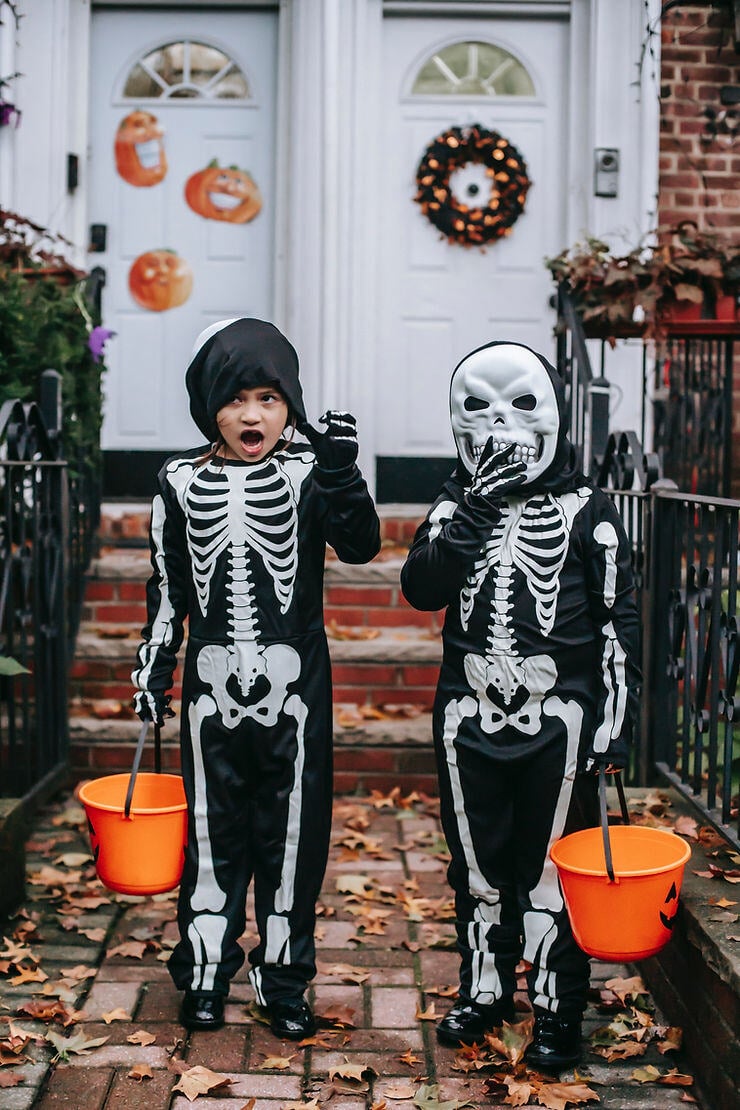Breaking down Halloween for kids & teens
‘Tis the season when ghosts, ghouls and witches of all shapes and sizes appear in our neighbourhoods. In juxtaposition with Diwali, the Festival of Lights, Halloween on October 31st celebrates all that is dark, macabre and other-wordly and has become a major festival on both sides of the Atlantic.
Its origins are debated but it is clear that it draws from many cultures and religions including Celtic and Christian festivals. In the eighth century Pope Gregory III designated November 1st as All Saints Day with the evening before All Hallows Eve. Halloween has since evolved into the festival we recognise today with a growing list of associated traditions from pumpkin carving to costume wearing.

Halloween celebrations seem to grow year-on-year and as we face post-Covid repercussions, both societal and economic its role in allowing us all to let off steam as we face whatever the winter may bring, is ever-more important. It has become a key ritual in our celebration calendar.
Indeed, Halloween celebrations in the US are on a par with Christmas with 86% of kids telling us they celebrate the festival vs 87% for Christmas. It’s not quite as embedded in the UK with 73% of kids celebrating Halloween vs 83% for Christmas.
Using our bespoke Motivations Framework, we thought we’d take a deeper look at Halloween to identify what the key drivers are for kids’ engagement with the holiday and its traditions and to understand the trans-Atlantic differences.
There are 3 key motivations that stand out when understanding the appeal of Halloween:
Social: The desire to interact with peers and family and gain social currency
"I'm dressing up with my whole family for Halloween - we are all emojis - I'm the mad face!" – Tannon, Age 11, Nevada
A key attraction of Halloween is the social opportunities around it. This may account in some way for the differences in UK and US. In the US it is much more of a family celebration – from family costumes, neighbourhood trick or treating and organised family experiences such as pumpkin picking and scary hayrides.
Until recently in the UK celebrations have been pretty much confined to school and play organisations such as Brownies and Scouts. However, the UK is definitely importing US Halloween fervour with an increasing number of family attractions and experiences and UK influencers sharing their Halloween home décor on TikTok, increasing quite dramatically the social opportunities in the UK.
Creativity: a mix of creativity and construction, often associated with mental health benefits
"For Halloween we will be doing a school party with fizzy drinks and sweets and I'll dress up and get fake blood" – Noah, Age 12, London
Halloween has always been a hugely creative holiday. But as we all understand more the benefits of creativity and acknowledge what a gap the loss of the creative arts left in our lives during lockdown, it certainly feels that we are moving into a new enlightenment. There’s a clear shift from simply buying a costume to coming up with something bespoke and unique and kids are at the heart of all that creativity.
Identity: The desire to explore self and test/demonstrate that to the outside world, particularly peers
"For Halloween we are going to a Halloween party and it has a haunted hay ride through a maze with loads of jump scares!" – Ellis, Age 10, Missouri
We believe identity is the most important and salient driver of Halloween engagement. Halloween above all other celebrations gives kids and teens unique opportunities to explore their identity - they can try on looks and personas that they wouldn’t have the courage (or permission) to deploy at another time and it’s the only time of year they are actively encouraged to find their scare limits and embrace the fear. The free-thinkers and kids who walk a different path can build their own sense of self behind the freedom of a mask or costume.
If you would like to know more on how to maximise Halloween 2023 for your brand, or would like to hear more about our motivations framework please get in touch and use our brain. We’re here to help.